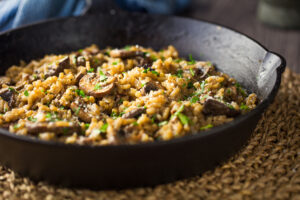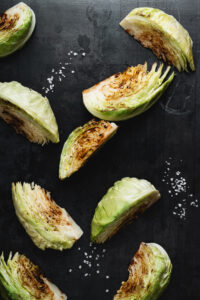This article appears in the May 4, 2017 issue of AICR’s eNews.
Grilling season is upon us, and if you’re concerned about how grilling could link to cancer you’re not alone. Questions about grilling and cancer risk are among the most common we get asked.
Here, AICR experts share the latest research and evidence-based advice on staying healthy and cancer-protective as you fire up your grill.
The Grilling-Cancer Connection
First, there is no clear research showing that grilling meats link to cancer risk.
But cooking meats at high temperatures, such as grilling, can lead to two main types of potentially cancer-causing substances.
- Polycyclic aromatic hydrocarbons (PAHs), found in flames, can rise and adhere to meat on an open fire.
- Heterocyclic amines (HCAs) form in meat when animal proteins react to the intense heat of the grill.
Laboratory experiments have shown that HCAs and PAHs can cause changes in DNA that may increase the risk of cancer.
Click here to test your cancer prevention knowledge
If you thought grilling meat leads to cancer you’re not alone. About a quarter of Americans also believe that, according to our new survey. How do you compare to what Americans know about cancer prevention overall?
What the Research Shows: Grill Veggies over Hot Dogs
Whether or not you grill them, the research is clear that diets high in red meat increase risk of colorectal cancer, and that even small amounts of processed meats, eaten regularly, increase risk for both colorectal and stomach cancers.
Based on this evidence, AICR recommends limiting red meat to 18 ounces of cooked meat per week and saving hot dogs and other processed meats (bacon, sausages, etc.) for special occasions.
Three Grilling Guidelines
While there is no clear evidence showing HCAs and PAHs increase risk for cancer, there are simple precautions you can take. Here are three basic grilling guidelines from the experts:
- Shorten Grilling Time: If you are grilling larger cuts, you can reduce the time meat is exposed to the flames by partially cooking it in a microwave, oven or stove first. Immediately place the partially cooked meat on the preheated grill to keep meat safe from bacteria and other food pathogens. You can also cut meat into smaller portions before grilling.
- Trim the Fat: Trimming the fat off meat can reduce flare-ups and charring. Cook meat in the center of the grill and make sure to flip frequently.
- Grill Green (Or Orange or Yellow or Multicolor): Grilled vegetables and fruits produce no HCAs or other potentially harmful compounds, and diets high in plant foods are associated with lower cancer risk.





